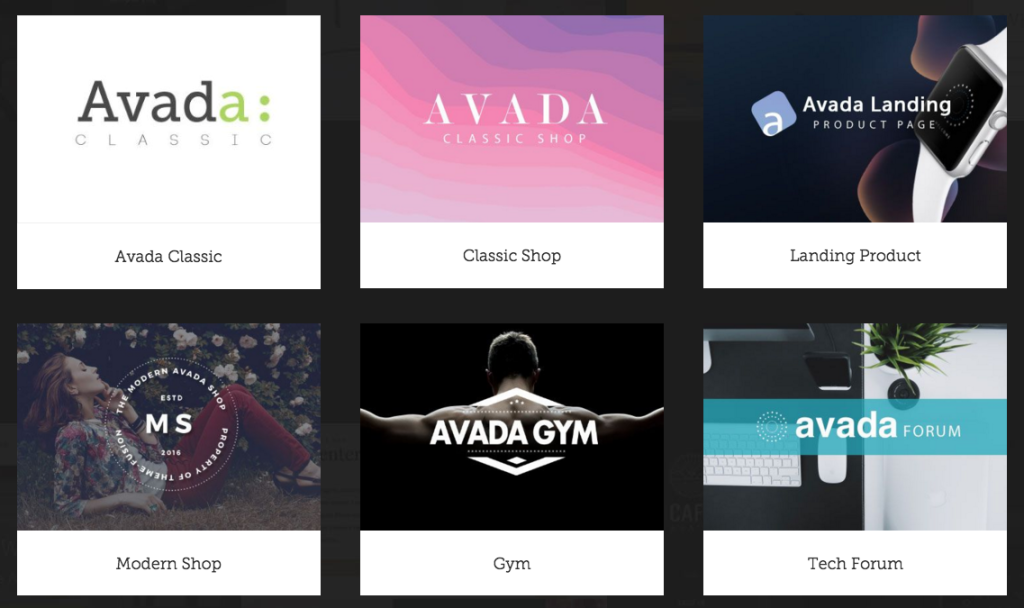Every so often, somebody writes a post claiming something is dead. Email is dead. SEO is dead. Facebook is dead. Web Design has not been spared, and we’ve seen bold claims of the imminent death of web design on Mashable. They claim that ready-made themes are killing the industry:
“Most of the content that you see on the web today is run by some framework or service — WordPress, Blogger, Drupal, you name it. Frameworks provide you a foundation and shortcuts so you spend less time struggling with the creation of a web site, and more time creating content. As a consequence of the ubiquity of these frameworks, a whole world of free and paid templates lets you get started with a professional-looking design in minutes.”
They feel threatened by the sheer number of themes available. Since it is “easy” to setup a website and a ready-made theme – anybody can do it.
I beg to differ.

If you’re threatened by platforms like WordPress and ready-made themes, I hate to break it to you – but you’re doing web design wrong. You’re missing a fundamental piece of providing any service. You’re not providing enough value to the client.
WordPress Theme Companies and Marketplaces
While there will always be a need for custom design and development, it’s clear from the 2015 WordPress Business Revenue Statistics by Scott Bolinger, you’ll see that theme focused companies are thriving.

Companies such as iThemes are making more than a million dollars a year. WooThemes (recently acquired by Automattic) used to make more than than $10 million per year. Envato does not release revenue figures, but some statistics are available. Up to 2014 they’ve paid more than $224 million to authors since 2006. They have more than 50 Elite authors making more than a $75K per year. 30 of those make more than a million dollars a year.
It’s safe to say that the premium themes market is alive and kicking.
Embrace Premium WordPress Themes
Old school web designers and developers pride themselves on the work they do. They strongly feel that a job well done is a job which is started from scratch and developed as necessary for a client.
The ideal solution in an ideal world would be developing a custom theme for the exact needs of a client. This route though, costs lots of time and money and will price you out of most website design budgets. We live in a fast paced world, and whilst money may not be an issue for some clients, you’ll find that time is an issue. Most of my clients need things to be ready yesterday – so going with a custom solution can be shooting yourself in the foot.
1. Give Your Client Added Value from the Start
One of the biggest challenges we meet whilst working on web projects is getting the client to understand or imagine the final product’s visuals.
You might be thinking one thing, but you can never fully understand what your client is imagining from what you are describing.
A ready-made theme can work wonders for the final result. Once you have discussed some ideas with the client, go and search for some possible templates you could use. Then go to the client with a choice of templates which would fit their requirements best. These themes are all working demos, so you can already give the client an excellent sense of what they will be getting.
Let’s take Avada as an example – if you take your client through one of the live demos, you’re more likely to win the project.

Both you and your client will know what the end product will look like. You’re already setting yourself up for success and excellent client satisfaction.
Participating in the choice of the end-result, gives the client that feel-good factor. Of course it is your job as a web designer to nudge them in the right direction.
2. Turn Sites Around Faster (and Hence Become More Profitable)
Whilst it may be more fun and feel like a better achievement when you create a site from scratch, using a premium WordPress theme is more profitable. The foundation and most of the work has already been done using a theme so you are going to spend much less time overall. This allows you to do two things:
- Reduce your rates
- Make more profit on each project
Let’s take a concrete example. Let’s say you charge at a flat rate of $60/hour.
| Task | Premium theme | Custom theme |
|---|---|---|
| Project Management | 10 hours | 10+ hours |
| Design time | 4 hours | 16+ hours |
| Development time | 16 hours | 40+ hours |
| Content / copy | 20 hours | 20 hours |
| … | ||
| Total | 50 hours | 86+ hours |
There are other parts to the website which we won’t mention, but we all know that the design and development time of a custom theme will spike significantly.
There’s a difference of 36 hours which charged at the rate of $60 would be a difference of more than $2000.
If you don’t charge for those extra hours, you’ve got a leeway of $2000 to work with when giving the final price.
If you can get away with charging $1500 out of those $2000, good luck to you – you’ve made a very handsome profit. Even if you charge just $500 of the $2000, you’re already better off.
You’re spending less time working and earning more.
3. Charge a Premium for Fast Service Rates
Using stock photography and a familiar WordPress theme – you should be able to turnaround an excellent site in 1 to 2 days.
That allows you to charge excellent fast service rates which will allow you in turn to give yourself a bit of a bonus.
Can Anybody Do Your Job?
Using a ready-made premium theme may make it seem easy to create a great looking web design. Once again, I beg to differ.
If your result is only as good as that of somebody who is not an experienced web designer – you’re not doing a good enough of a job with your web design.
It is possible to create a good looking site with a premium theme. But you – an experienced web designer should not settle for a “good” site. The end result of a web design project from you, should leave no stone unturned, and the end result should be excellent, not just good.
You should know that there are many behind the scenes things which you need to do.
- You need to match colors and tones.
- You need to find the adequate typography and fonts.
- You should have followed all optimal user experience suggestions.
- You should have optimized the site for search engines out of the box.
- You know how to create a responsive site which looks good whatever device you see it on, not just on the desktop and browser where it is being designed.
Would somebody who has not worked in web design figure out the concept of a responsive grid?
Really and truly, a good web design project requires an experienced web designer who is able to understand the nuances of web design.
What Is the Value You Should Be Offering as an Experienced Web Designer?
- Understand responsive web design and setup a site with that in mind
- Know where and how to find appropriate fonts, typography, imagery, iconography for the appropriate design project.
- Know how to combine everything in a way which creates a perfect visual result
- Setup a web design project with security in mind and prevent the site from getting hacked
- Ensure a site is backed up for just those times when things go belly up
- Setup a site, content and plugins as necessary for search engines and local SEO
- Install Google Analytics and monitoring services, connect the site to Google Search Console, and other webmaster activities
- Ensure you’ve followed appropriate User Experience concepts, and optimized the site such that it loads fast
- Tested the site on various devices and browsers and ensured it works well across the board
- Mess with the code where necessary to tweak as necessary to achieve an optimal result
- Be able to understand and figure out any problems or bugs which arise whilst developing the project
- And so many more…
There are of course many other things which an experienced web designer is able to cater for. If you’re having trouble justifying your fees, making your client aware that you are able to offer the above will go a long way in winning you the project.
As an experienced web designer, you should be able to walk the fine line of not developing a theme from scratch to save time. At the same time use your experience to generate much more value for your client than anybody else could and would.
Give Your Clients Ongoing and More Value
The end of the web design project should not signal the end of the relationship with your client – infact I dare say, it should be the start! There is plenty of value you can give your client using your experience in the industry, after the completion of their website.
- Hosting, updates, and general maintenance – a non-techy client will be very glad to have you handling all their hosting. They want to know that the domain and hosting are renewed on time. CMS updates are implemented as soon as they come out. Any problems with the hosting are dealt by you. In fact, they just want to know that their site works. They don’t really care about the rest.
- Implement a maintenance and updates retainer – continuing on point 1, you should explain that there is going to be ongoing work and updates, and you’ll be able to provide support as necessary. You can discuss and estimate with the client how much work they expect – 5 to 10 hours a month would be what I would recommend at the very least.
- Manage social streams or blogging content – Small shops and small family businesses might not have the time to maintain their social media streams and blog. Again, discuss with your client and agree specific work amounts per month you will provide them with. Many small clients will be happy to use your guidance.
- Optimize for search engines – another area which needs ongoing work would be optimizing the site for search engines. There’s plenty of work to be done if you plan to implement white-hat SEO techniques. This is somewhat difficult to explain to customers who are not too familiar – but done right, could reap immense benefits both to you and the client.
- Other online guidance – you know the client better than anybody else, there’s going to be something they will need your expertise with. Keep your eyes and ears open for opportunities to help your client (and of course help increase your revenue stream).
Increase Your Passive Income Stream
There’s one final way which we haven’t mentioned so far. You’ve got the experience to develop a theme from scratch – why not develop your next custom theme with the intent of selling it? You can then make it available on your own online shop or sell it on one of the many marketplaces available.
Done right – you’ve got potential for great passive income. This is a good idea for side projects, or a project which you can work on between jobs or during other down time.
Start slowly, and iterate with small improvements on your own theme. Once you’ve got a theme which you would be willing to pay money for, start selling it. You should be able to make a nice supplementary passive income stream.
Now that I’ve given my reasons for why I feel web design is not being killed by premium themes, why don’t you let me know your own reasons as to why you agree or disagree below.
Frequently Asked Questions about WordPress Themes and Web Design
How do WordPress themes impact the uniqueness of web design?
WordPress themes have a significant impact on web design. They provide a pre-designed layout that can be customized to suit the needs of a specific website. However, the use of these themes can sometimes lead to a lack of uniqueness in web design. This is because many websites end up using the same or similar themes, leading to a certain level of uniformity across the web. While this can be beneficial in terms of user experience and familiarity, it can also stifle creativity and individuality in web design.
Can I customize WordPress themes to make my website unique?
Yes, WordPress themes are highly customizable. You can change colors, fonts, layouts, and add custom CSS to make your website stand out. However, it’s important to note that the level of customization depends on the specific theme you choose. Some themes offer more flexibility and options than others. It’s also worth noting that customizing a theme requires a certain level of technical knowledge and skill.
Are there any alternatives to using WordPress themes for web design?
Yes, there are several alternatives to using WordPress themes for web design. One option is to hire a professional web designer to create a custom design for your website. This can be more expensive, but it allows for a high level of customization and uniqueness. Another option is to use a website builder like Wix or Squarespace, which offer a range of templates that can be customized to suit your needs.
What are the benefits of using WordPress themes for web design?
WordPress themes offer several benefits for web design. They provide a quick and easy way to create a professional-looking website without the need for extensive coding knowledge. They also offer a range of features and functionalities that can enhance the user experience, such as responsive design, SEO optimization, and integration with social media platforms.
How do I choose the right WordPress theme for my website?
Choosing the right WordPress theme for your website depends on several factors. These include the purpose of your website, your target audience, and your personal preferences in terms of design and functionality. It’s also important to consider the level of customization offered by the theme, as well as its compatibility with different browsers and devices.
Are premium WordPress themes worth the investment?
Premium WordPress themes can be worth the investment for several reasons. They often offer more features and customization options than free themes, and they typically come with dedicated support from the theme developer. However, it’s important to carefully consider your needs and budget before deciding to invest in a premium theme.
Can WordPress themes affect the performance of my website?
Yes, the WordPress theme you choose can affect the performance of your website. Some themes are more resource-intensive than others, which can slow down your website and negatively impact the user experience. It’s important to choose a theme that is well-coded and optimized for performance.
How often should I update my WordPress theme?
It’s recommended to update your WordPress theme whenever a new version is released. This ensures that your website is running the latest version of the theme, which often includes bug fixes, security updates, and new features. However, before updating, it’s important to backup your website to prevent any potential data loss.
Can I use multiple WordPress themes on the same website?
While it’s technically possible to use multiple WordPress themes on the same website, it’s generally not recommended. This is because it can lead to compatibility issues and negatively impact the performance and user experience of your website. Instead, it’s better to choose a versatile theme that can accommodate all your needs.
How can I learn more about WordPress themes and web design?
There are many resources available to learn more about WordPress themes and web design. These include online tutorials, blogs, forums, and courses. You can also learn by experimenting with different themes and customization options on your own website.
 David Attard
David AttardDavid is an inquisitive web designer who frequently shares his tips and tricks at CollectiveRay . When he's not blogging about web design, something he's been into for the last 12 years, he's usually dreaming about his next big thing.




